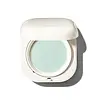What's inside
What's inside
 Key Ingredients
Key Ingredients

 Benefits
Benefits

 Concerns
Concerns

 Ingredients Side-by-side
Ingredients Side-by-side

Mica
Cosmetic ColorantKaolin
AbrasivePolymethyl Methacrylate
Aluminum Starch Octenylsuccinate
AbsorbentOctyldodecyl Stearoyl Stearate
EmollientSilica
AbrasivePolypropylene
Squalane
EmollientPolyethylene
AbrasiveSilica Dimethyl Silylate
EmollientSorbitan Isostearate
EmulsifyingDimethicone
EmollientMethicone
EmollientEthylhexylglycerin
Skin ConditioningGlyceryl Caprylate
EmollientWater
Skin ConditioningMineral Salts
Skin ConditioningButylene Glycol
HumectantCamellia Sinensis Leaf Extract
AntimicrobialPhenoxyethanol
PreservativeCaprylyl Glycol
Emollient1,2-Hexanediol
Skin ConditioningMentha Arvensis Extract
MaskingDisodium EDTA
Acetic Acid
BufferingMica, Kaolin, Polymethyl Methacrylate, Aluminum Starch Octenylsuccinate, Octyldodecyl Stearoyl Stearate, Silica, Polypropylene, Squalane, Polyethylene, Silica Dimethyl Silylate, Sorbitan Isostearate, Dimethicone, Methicone, Ethylhexylglycerin, Glyceryl Caprylate, Water, Mineral Salts, Butylene Glycol, Camellia Sinensis Leaf Extract, Phenoxyethanol, Caprylyl Glycol, 1,2-Hexanediol, Mentha Arvensis Extract, Disodium EDTA, Acetic Acid
Silica
AbrasiveCaprylic/Capric Triglyceride
MaskingDimethicone/Vinyl Dimethicone Crosspolymer
Skin ConditioningMethicone
EmollientWater
Skin ConditioningChamomilla Recutita Flower Water
MaskingEthylhexylglycerin
Skin ConditioningGlyceryl Caprylate
EmollientButylene Glycol
HumectantMentha Arvensis Leaf Extract
MaskingDipotassium Glycyrrhizate
Humectant1,2-Hexanediol
Skin ConditioningHydrolyzed Hyaluronic Acid
HumectantHydrolyzed Corn Starch
HumectantPinus Densiflora Leaf Extract
AntimicrobialTocopherol
AntioxidantDisodium EDTA
Silica, Caprylic/Capric Triglyceride, Dimethicone/Vinyl Dimethicone Crosspolymer, Methicone, Water, Chamomilla Recutita Flower Water, Ethylhexylglycerin, Glyceryl Caprylate, Butylene Glycol, Mentha Arvensis Leaf Extract, Dipotassium Glycyrrhizate, 1,2-Hexanediol, Hydrolyzed Hyaluronic Acid, Hydrolyzed Corn Starch, Pinus Densiflora Leaf Extract, Tocopherol, Disodium EDTA
 Reviews
Reviews

Ingredients Explained
These ingredients are found in both products.
Ingredients higher up in an ingredient list are typically present in a larger amount.
1,2-Hexanediol is a synthetic liquid and another multi-functional powerhouse.
It is a:
- Humectant, drawing moisture into the skin
- Emollient, helping to soften skin
- Solvent, dispersing and stabilizing formulas
- Preservative booster, enhancing the antimicrobial activity of other preservatives
Butylene Glycol (or BG) is used within cosmetic products for a few different reasons:
Overall, Butylene Glycol is a safe and well-rounded ingredient that works well with other ingredients.
Though this ingredient works well with most skin types, some people with sensitive skin may experience a reaction such as allergic rashes, closed comedones, or itchiness.
Learn more about Butylene GlycolDisodium EDTA plays a role in making products more stable by aiding other preservatives.
It is a chelating agent, meaning it neutralizes metal ions that may be found in a product.
Disodium EDTA is a salt of edetic acid and is found to be safe in cosmetic ingredients.
Learn more about Disodium EDTAEthylhexylglycerin (we can't pronounce this either) is commonly used as a preservative and skin softener. It is derived from glyceryl.
You might see Ethylhexylglycerin often paired with other preservatives such as phenoxyethanol. Ethylhexylglycerin has been found to increase the effectiveness of these other preservatives.
Glyceryl Caprylate comes from glycerin and caprylic acid, a fatty acid from coconut. It has emollient and emulsifier properties.
As an emollient, it helps hydrate your skin. Emollients work by creating a barrier on your skin to trap moisture in, helping to keep your skin soft and smooth.
On the other hand, emulsifiers prevent ingredients (such as oil and water) from separating.
Learn more about Glyceryl CaprylateMethicone is a type of silicone and is a simpler form of dimethicone.
Silicones are used to enhance the texture of products and have emollient properties. Methicone is used to give products a silky texture and improves spreadability.
Silica, also known as silicon dioxide, is a naturally occurring mineral. It is used as a fine, spherical, and porous powder in cosmetics.
Though it has exfoliant properties, the function of silica varies depending on the product.
The unique structure of silica enhances the spreadability and adds smoothness, making it a great texture enhancer.
It is also used as an active carrier, emulsifier, and mattifier due to its ability to absorb excess oil.
In some products, tiny microneedles called spicules are made from silica or hydrolyzed sponge. When you rub them in, they lightly polish away dead skin layers and enhance the penetration of active ingredients.
Learn more about SilicaWater. It's the most common cosmetic ingredient of all. You'll usually see it at the top of ingredient lists, meaning that it makes up the largest part of the product.
So why is it so popular? Water most often acts as a solvent - this means that it helps dissolve other ingredients into the formulation.
You'll also recognize water as that liquid we all need to stay alive. If you see this, drink a glass of water. Stay hydrated!
Learn more about Water